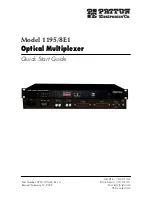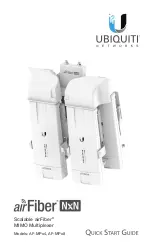
342-86400-498PS
Issue 1.2
April 2012
Page 77
Copyright
GE Multilin Inc. 2010-2012
ETHER-1000 / ETHER-100 units accessing the TDM pipe thus
indicating that the local unit can "hear" all the way around the ring to
itself. If the ring is "broken", it will indicate the farthest ETHER-1000 /
ETHER-100 unit reachable before the break point.
Farthest Unit
This field can read
Local (R)
(applicable to the Left port only),
Local (L)
(applicable to the Right port only),
End
,
Break
, or „-„.
-
LOCAL indicates that, through the particular TDM pipe, the unit is a
part of an ETHER-1000 / ETHER-100 ring topology and the farthest
visible ETHER-1000 / ETHER-100 unit through the given Line port
is this unit itself (visible through the opposite Line port).
-
END indicates that, through the particular TDM pipe, the unit is part
of an ETHER-1000 / ETHER-100 linear topology and the visibility
through the given Line port is all the way to the terminal site.
-
BREAK indicates a break exists somewhere along this TDM pipe as
seen from the given Line port.
Note
: This may be very useful for identifying the fault location.
-
„-„ indicates that, through the particular TDM pipe, no hops are seen
from the given Line port. This usually means that the Line port is
disabled (through the respective
Topology
field setting in the Line
Setup tab).
Adjacent MAC
Displays the 18 least significant bits of the MAC addresses of the
ETHER-1000 or ETHER-100 units that are adjacent to this unit
(looking through the particular TDM pipe).
Total Hops
Indicates the total number of ETHER-1000/ETHER-100 hops along the
particular TDM pipe. The unit updates this (flash byte) reading when
the network looks intact, and subsequently uses this value for its
algorithms during path failures.
In a ring network under normal conditions, both
Hops Seen
readings
(Left and Right) must be equal to the
Total Hops
reading.
In a linear network under normal conditions (or in a ring with single
break), the following formula applies:
Hops Seen (L) + Hops Seen (R) = Total Hops
















































